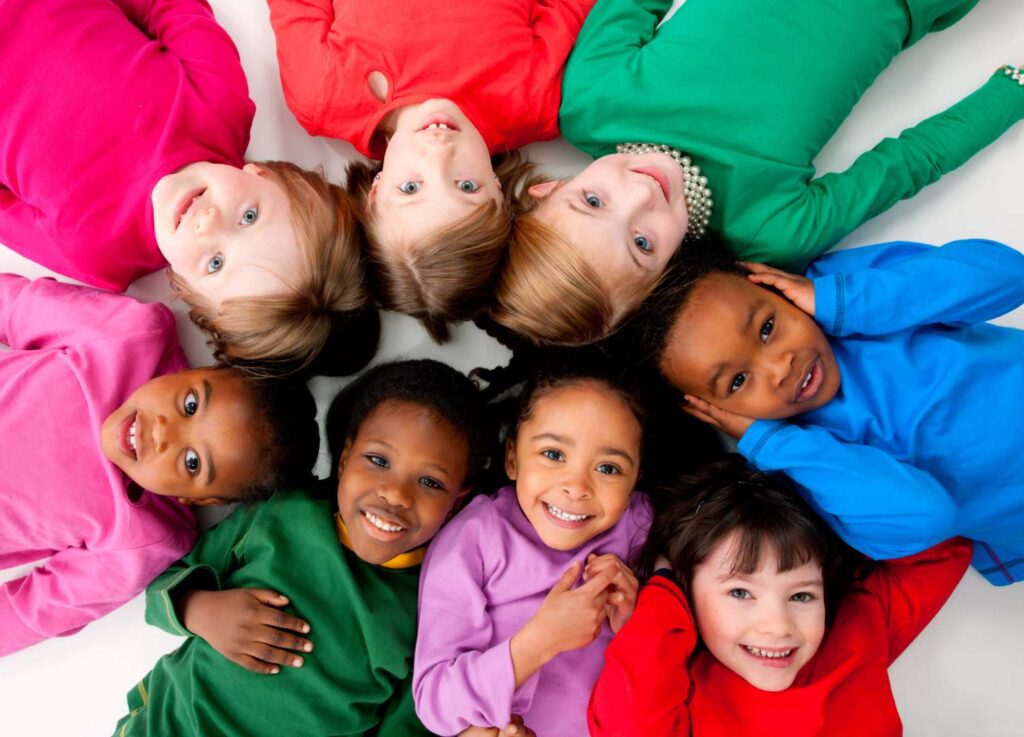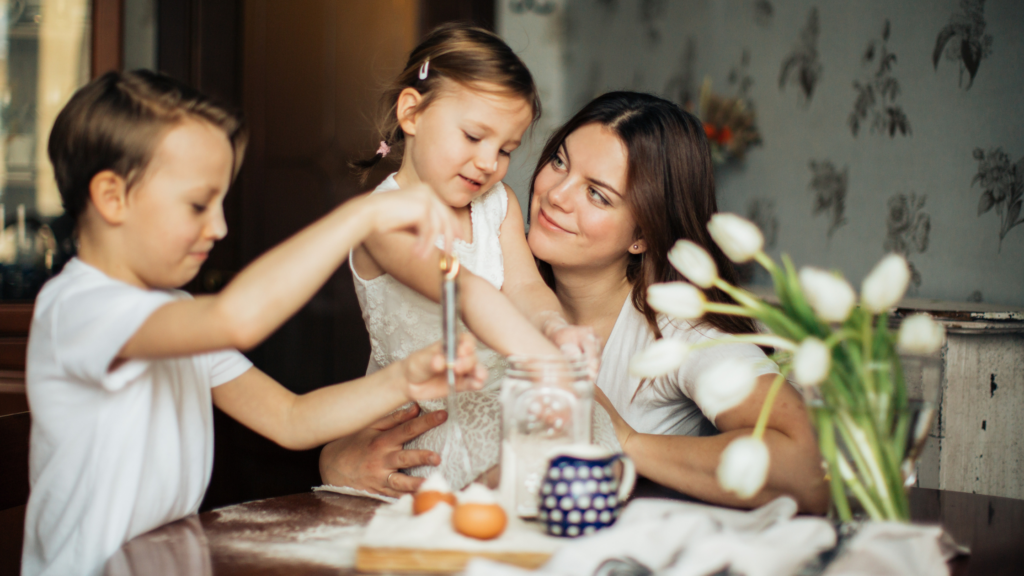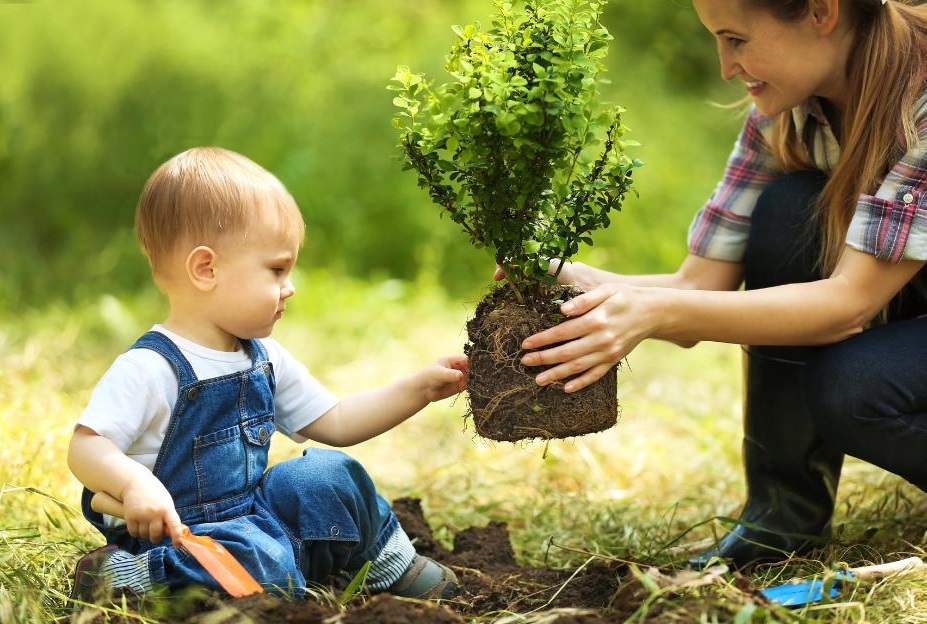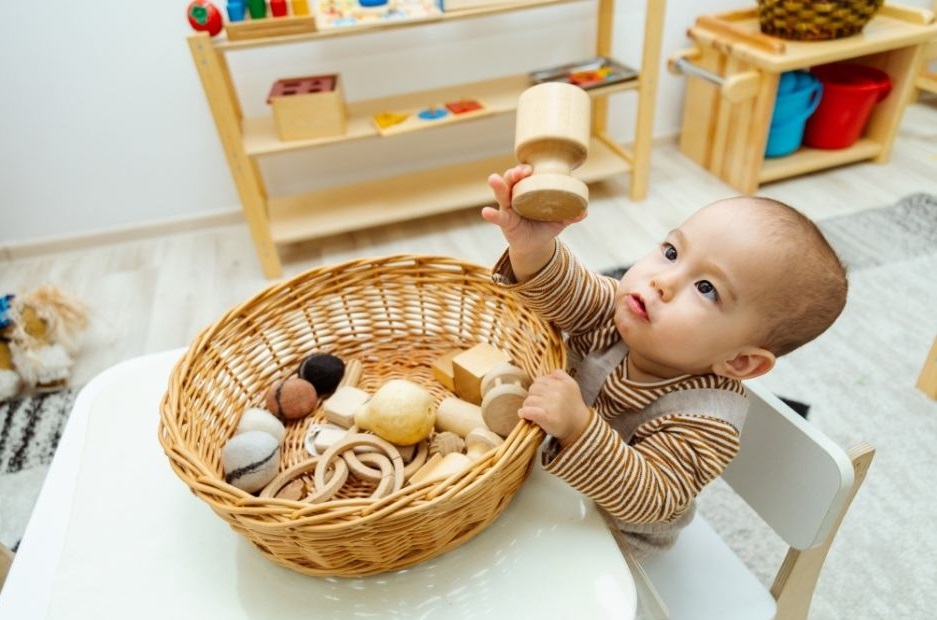More than one hundred years ago, Dr. Maria Montessori knew that the promise for our future and the hope for a peaceful world rested in the hands of children. She recognized that children needed to be educated about themselves, others, and the world around them in order to understand and appreciate diversity.
As Montessori parents and caregivers, our task is to help our children develop this appreciation for diversity. Although we may not be able to travel the world to expose our children to people from a variety of cultures, we can provide experiences within the four walls of our own homes or attend events in our own neighborhoods to help our children learn about, understand, and appreciate diversity.
On the shelves
One of the best ways to help children understand other cultures is to provide them with activities and books on their shelves that they can independently access. Country or continent baskets can be created for little ones to investigate that include objects, photos, and instruments from various cultures.
Check out the expansive collection of books supporting diversity and inclusion we’ve gathered for you here in our Amazon shop (affiliate link).
In the kitchen
Food is a great way for young children to discover new cultures! Whether it’s mixing, pouring, scooping, or measuring, there are so many ways that little ones can help in making dishes from around the world.
Here are some foods you and your child can make together to enjoy tastes of other cultures:
- Latkes – Potato pancakes often enjoyed by the Jewish people on Hanukkah to remind them of the miracle of the oil.
- Potstickers – A type of Chinese dumpling, often filled with pork and cabbage, that is an integral part of any celebration.
- Hawaiian Banana Bread – It’s believed that Polynesians brought bananas with them to Hawaii on the canoes when they sailed across the pacific. Today, Maui is famous for what many call the world’s best banana bread and is known for its many roadside stands.
- Hummus – This chickpea based delicacy originated in the Mediterranean and the Middle East and has been enjoyed by people around the world for hundreds of years.
- Mealie Cakes – These traditional South African cornmeal biscuits originated in 1840. Corn was originally brought to Southern Africa by the Portuguese and quickly became a staple food across the region.
Arts and crafts
A variety of artforms and mediums exist all over the world and are a great way for little ones to learn about other cultures. What’s more, young children love the hands-on experience of creating arts and crafts–especially when it involves getting messy!
Here are some ideas of arts and crafts you can try with your little one to help them appreciate diversity:
- Potato printing – Use potatoes as stamps to introduce the Chinese art of printmaking.
- Rainsticks – Use a cardboard tube (toilet paper or paper towel roll) filled with small pebbles, beans, or rice to make a rainstick emulating those used by ancient Chileans in ceremonies to bring in the rain.
- Dot Painting – Provide your child with some paint and a Q-tip to create dot art similar to that of the Aboriginal Australians.
- Thali Craft for Diwali – Thali means plate in Hindi, and refers to the round steel tray used to carry little bowls of rice, vegetables, bread, yogurt, and maybe a sweet dish. Using sticky jewels, doilies, foam decorations, glitter, and stickers, let your child decorate a metallic plastic plate to celebrate Diwali, the Hindu Festival of Lights. Common elements in Indian decorations include flowers, leaves, jewels, and paisley.
- German Schultüte – Let your little one make a German school cone—a large, colorfully-decorated paper cone that can be filled with small gifts, sweets, and school supplies that you can give to them on their first day of school!
- Papel Picado – If your little one is able to use scissors, you can celebrate Mexican folk art by stacking and folding one or more sheets of tissue paper and cutting beautiful designs. Unfold carefully and tape to a long string of yarn and you have a beautiful example of a traditional Mexican craft!
Explore the fundamentals of Montessori parenting with this free video by Sylvia Arotin, offering insights and strategies to empower and educate your child.
Local museums and events
Attending heritage museums and cultural festivals are two great ways to help children develop cultural appreciation. These experiences allow communities to share their culture and provide opportunities for children to understand different perspectives and traditions.
These events are especially meaningful because the community extended an invitation to us to connect and learn, helping to create a welcoming space to build relationships and true understanding and appreciation. It’s also wonderful that any proceeds go back into the communities putting on the events, providing support to those who may be marginalized.
A note about cultural appropriation
While it is important for children to develop an understanding of people from diverse backgrounds, there is a fine line between appreciation and misappropriation.
Cultural appropriation, or misappropriation, is the adoption of icons, rituals, aesthetic standards and behavior from one culture or subculture by another. This adoption is done without any real understanding of why the original culture took part in these activities or the meanings behind them. This often leads to culturally significant artifacts, practices, and beliefs being converted into “meaningless” pop culture or being given a meaning different from that of the original culture.
When teaching children how to appreciate diversity, it is important to ensure that all activities and experiences demonstrate the utmost respect for members of any and all cultures, particularly those that are marginalized.






